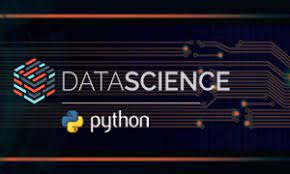Description
Training Introduction:
This course provides a comprehensive guide to using KNIME for machine learning, covering the entire workflow from data preprocessing to model deployment. Participants will learn how to leverage KNIME’s powerful tools to prepare data, build and evaluate machine learning models, and deploy these models into production environments. The training is designed to equip data scientists and analysts with practical skills to implement end-to-end machine learning solutions using KNIME’s user-friendly platform.
Prerequisites:
- Basic knowledge of KNIME (workflow construction, data manipulation)
- Fundamental understanding of machine learning concepts and techniques
- Experience with data preprocessing and basic statistics
- No advanced programming skills required, but familiarity with Python or R can be advantageous
Table of Content:
1. Introduction to Machine Learning with KNIME
1.1 Overview of machine learning and its applications
1.2 Introduction to KNIME’s machine learning capabilities
1.3 Setting up KNIME for machine learning projects
2. Data Preprocessing for Machine Learning
2.1 Data cleaning and transformation techniques
2.2 Feature engineering and selection
2.3 Handling missing values and outliers
2.4 Data normalization and scaling
3. Exploratory Data Analysis (EDA)
3.1 Conducting EDA to understand data characteristics
3.2 Visualizing data distributions and relationships
3.3 Identifying patterns, correlations, and potential issues
4. Building Machine Learning Models
4.1 Overview of KNIME’s machine learning nodes and algorithms
4.2 Creating classification models (e.g., Decision Trees, Random Forests)
4.3 Developing regression models (e.g., Linear Regression, Support Vector Machines)
4.4 Implementing clustering and unsupervised learning techniques
5. Model Evaluation and Tuning
5.1 Evaluating model performance with metrics (accuracy, precision, recall, AUC)
5.2 Using cross-validation and hyperparameter tuning techniques
5.3 Addressing model overfitting and underfitting
6. Advanced Machine Learning Techniques
6.1 Applying ensemble methods and model stacking
6.2 Using neural networks and deep learning (with KNIME extensions)
6.3 Integrating external libraries and tools (e.g., TensorFlow, Keras)
7. Model Deployment and Integration
7.1 Preparing models for deployment
7.2 Deploying models using KNIME Server and KNIME WebPortal
7.3 Integrating machine learning models into production environments
8. Automating Machine Learning Workflows
8.1 Automating data preprocessing, model training, and evaluation
8.2 Scheduling and managing workflows for continuous integration
8.3 Monitoring and maintaining model performance over time
9. Case Studies and Practical Applications
9.1 Real-world case studies showcasing machine learning solutions with KNIME
9.2 Hands-on projects to build, evaluate, and deploy models
9.3 Analyzing and interpreting results for actionable insights
10. Best Practices and Advanced Tips
10.1 Best practices for designing and managing machine learning workflows
10.2 Tips for optimizing model performance and workflow efficiency
10.3 Staying updated with the latest KNIME features and machine learning advancements
11. Conclusion and Future Learning Opportunities
11.1 Recap of key concepts and skills learned
11.2 Resources for further learning and advanced machine learning topics
11.3 Engaging with the KNIME community and exploring additional learning resources
If you are looking for customized info, Please contact us here







Reviews
There are no reviews yet.